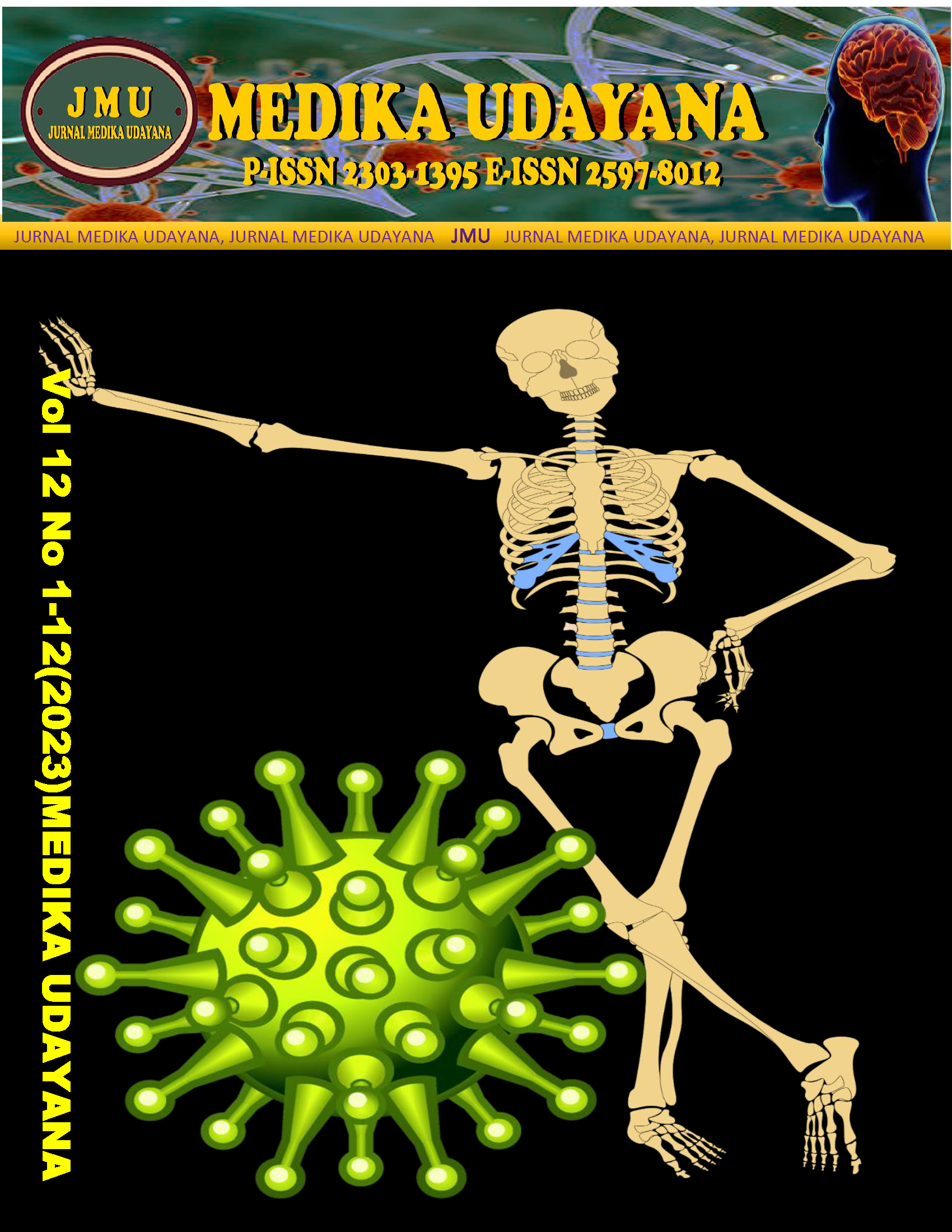Blood Pressure Variation and Complication of End Stage Renal Disease Patients Undergoing Hemodialysis in RSUP Sanglah Denpasar
Abstract
ABSTRACT
Introduction: Intradialytic hypertension and intradialytic hypotension in end-stage renal disease patients undergoing regular hemodialysis are the two factors that can increase the mortality risk associated with cardiovascular disease. Aim: To know the blood pressure variability, frequency of hypertension and hypotension intradialytic, also symptoms. Method: The research’s design is observational based on primary data through six times blood pressure observation and symptom observation. It’s also based on secondary data through medical records. There are 100 respondents who have met the inclusion and exclusion criteria. Results: The majority of respondents are male (62%), 51-50 years old (31%), with pre-dialytic and dry weight around 51-70 kg (61% and 60%), PNC as the etiology (56%), and mostly 1-5 years undergoing hemodialysis (44%). The variability has shown there’s a drop of blood pressure average from pre-hemodialysis to the fourth hour of hemodialysis by 11.03 mmHg, afterwards the blood pressure average increased on post-hemodialysis by 2.98 mmHg. According to statistics, the systolic blood pressure’s coefficient of variation is 16.6%, p< 0.001, the maximum value is 148.57 mmHg, the minimum value is 137.54 mmHg. The frequency of intradialytic hypertension is 19% and intradialytic hypotension is 32%. Lastly, the most common symptom is muscle cramp (13%). Conclusion: There’s a significant difference among blood pressure during hemodialysis with coefficient of variation 16,6%. The frequency of intradialytic hypertension is 19% and hypotension intradialytic is 32%. And the most common symptom is muscle cramp (13%).
Keywords: intradialytic hypertension, intradialytic hypotension, blood pressure variability











